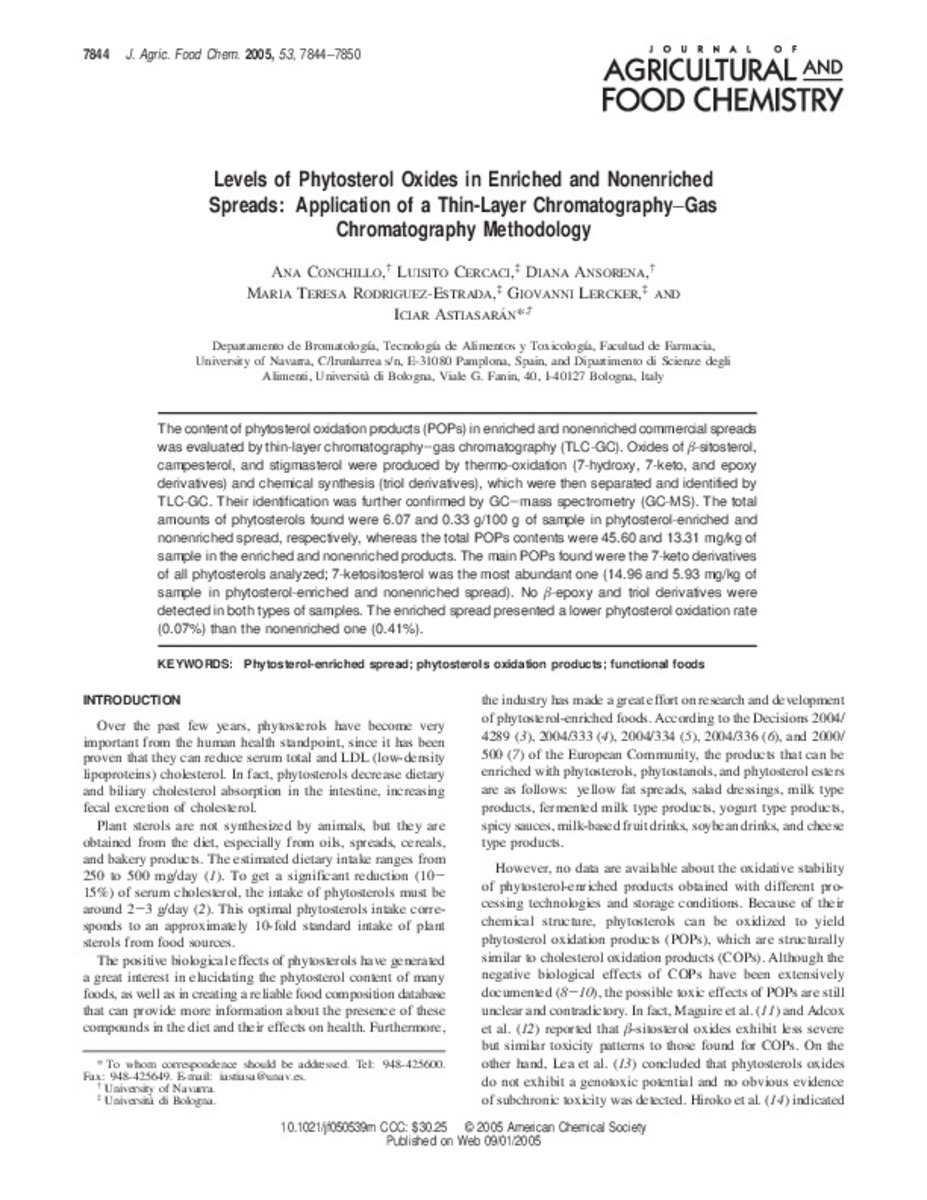Levels of phytosterol oxides in enriched and nonenriched spreads: application of a thin-layer chromatography-gas chromatography methodology
Keywords:
Phytosterol-enriched spread
Phytosterols oxidation products
Functional foods
Publisher:
American Chemical Society
Citation:
Conchillo A, Cercaci L, Ansorena D, Rodriguez-Estrada MT, Lercker G, Astiasaran I. Levels of phytosterol oxides in enriched and nonenriched spreads: Application of a thin-layer chromatography-gas chromatography methodology. J Agric Food Chem. 2005 Oct 5;53(20):7844-50.
Statistics and impact
0 citas en

Items in Dadun are protected by copyright, with all rights reserved, unless otherwise indicated.











